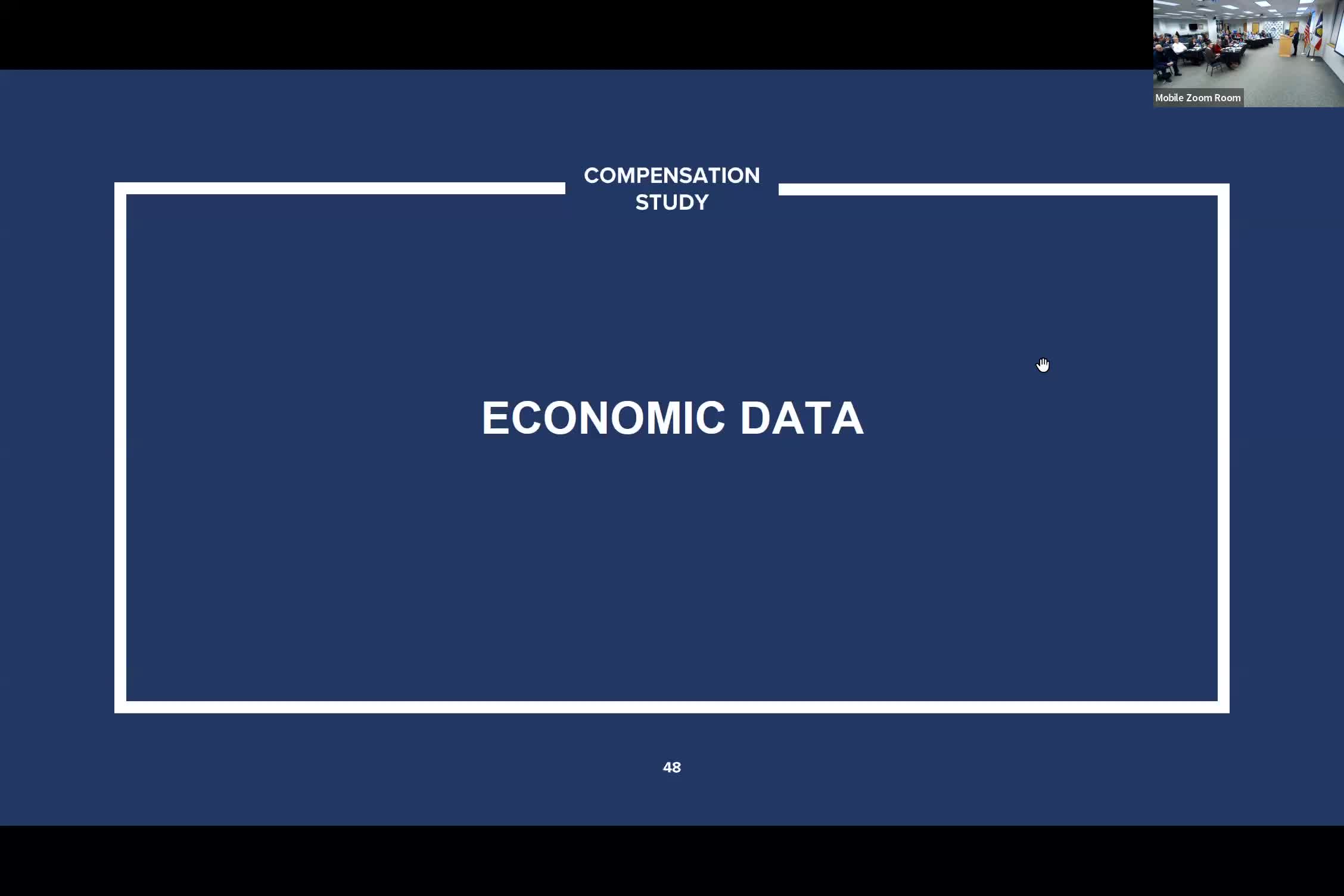Inflation eases as employers plan higher salaries for 2024
January 23, 2024 | Sandy City Council, Sandy, Salt Lake County, Utah

This article was created by AI summarizing key points discussed. AI makes mistakes, so for full details and context, please refer to the video of the full meeting. Please report any errors so we can fix them. Report an error »

In a recent government meeting, officials discussed key economic indicators, including the consumer price index (CPI) and unemployment rates, highlighting their implications for compensation planning in the upcoming year. The CPI, a critical measure of inflation, peaked at 9.1% in June 2022 but has since decreased, ending 2023 at 3.4%. Projections for 2024 suggest a further decline to between 2.5% and 2.8%. While this indicates a slowing inflation rate, officials emphasized that prices continue to rise, albeit at a slower pace, which remains a concern for both employers and employees.
The unemployment rate in Utah also featured prominently in the discussions. Starting the year at 2.4%, it rose to 2.8% by year-end, compared to a national average of 3.7%. This low unemployment rate has historically pressured employers to increase salaries to attract talent, a trend that may ease slightly with the current economic conditions.
Looking ahead to 2024, employers are planning an average salary increase of 4%, down from 4.4% in 2023 but still above the 3.1% average from previous years. This reflects a cautious optimism as organizations navigate the evolving economic landscape.
The meeting also included a review of a salary survey conducted to assess the competitiveness of local government compensation. The survey indicated that while significant progress has been made in aligning salaries with comparison cities, particularly for police and fire positions, there remains work to be done for other public employees. The results showed that 56% of surveyed positions were above the group average, a notable improvement from the previous year.
As officials prepare for the next compensation plan, they are considering various factors, including projected savings from turnover and changes in benefits. The anticipated costs for implementing the new pay plan are substantial, with estimates for funding performance evaluations and cost-of-living adjustments reaching into the millions.
Overall, the discussions underscored the ongoing challenges and adjustments required in compensation strategies amidst fluctuating economic conditions, with a focus on maintaining competitiveness and supporting employee retention.
The unemployment rate in Utah also featured prominently in the discussions. Starting the year at 2.4%, it rose to 2.8% by year-end, compared to a national average of 3.7%. This low unemployment rate has historically pressured employers to increase salaries to attract talent, a trend that may ease slightly with the current economic conditions.
Looking ahead to 2024, employers are planning an average salary increase of 4%, down from 4.4% in 2023 but still above the 3.1% average from previous years. This reflects a cautious optimism as organizations navigate the evolving economic landscape.
The meeting also included a review of a salary survey conducted to assess the competitiveness of local government compensation. The survey indicated that while significant progress has been made in aligning salaries with comparison cities, particularly for police and fire positions, there remains work to be done for other public employees. The results showed that 56% of surveyed positions were above the group average, a notable improvement from the previous year.
As officials prepare for the next compensation plan, they are considering various factors, including projected savings from turnover and changes in benefits. The anticipated costs for implementing the new pay plan are substantial, with estimates for funding performance evaluations and cost-of-living adjustments reaching into the millions.
Overall, the discussions underscored the ongoing challenges and adjustments required in compensation strategies amidst fluctuating economic conditions, with a focus on maintaining competitiveness and supporting employee retention.
View full meeting
This article is based on a recent meeting—watch the full video and explore the complete transcript for deeper insights into the discussion.
View full meeting

